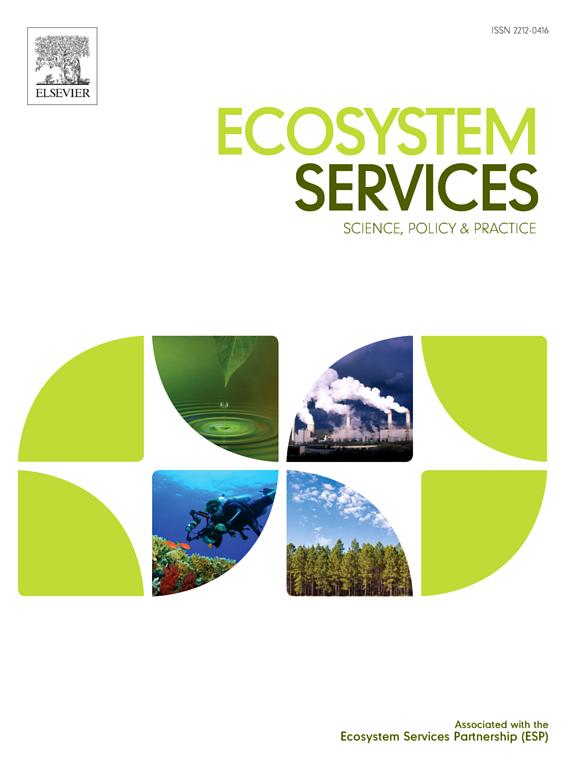Enhancing engagement: A European meta-analysis of forest owner preferences in voluntary agreements for the provision of biodiversity and ecosystem services
IF 6.6
2区 环境科学与生态学
Q1 ECOLOGY
引用次数: 0
Abstract
European forests are increasingly expected to provide a wide range of biodiversity and ecosystem services (BES) beyond timber production, positioning non-industrial private forest (NIPF) owners (hereafter, “forest owners”) as key contributors. An emerging question is how to engage forest owners in the needed forest management shift. To better understand the drivers of forest owner participation in voluntary agreements, we conducted a meta-regression analysis of 24 studies from survey-based, stated, or actual participation data, encompassing 28 distinct datasets and 571 observations from 12 European countries. The findings suggest that certain contract designs substantially enhance forest owner participation: short- and mid-term contracts of 1 to 30 years (as opposed to longer-term agreements), the inclusion of withdrawal clauses, non-restrictive management requirements, and higher compensation levels all promote uptake. Moreover, agreements centred on biodiversity, carbon, or forest multifunctionality attract higher participation than timber- or water-focused aims. Although trust between the actors is often considered important in the literature, we did not consistently detect such effects on participation rates. The results indicate a more consistent interest among forest owners in BES agreements after 2012, especially those centred on biodiversity and carbon aims as well as on multifunctionality, potentially reflecting broader policy trends and shifts in motivation among younger generations of forest owners, moving away from timber production. These insights offer practical lessons for policymakers and practitioners aiming to design effective, targeted incentives that leverage Europe’s privately owned forests to meet biodiversity and climate objectives.
加强参与:一项关于森林所有者在提供生物多样性和生态系统服务自愿协议中的偏好的欧洲元分析
越来越多的人期望欧洲森林在木材生产之外提供广泛的生物多样性和生态系统服务(BES),将非工业私人森林(NIPF)所有者(以下简称“森林所有者”)定位为关键贡献者。一个新出现的问题是如何使森林所有者参与必要的森林管理转变。为了更好地了解森林所有者参与自愿协议的驱动因素,我们对24项研究进行了荟萃回归分析,这些研究来自基于调查的、声明的或实际参与的数据,包括来自12个欧洲国家的28个不同的数据集和571个观察结果。调查结果表明,某些合同设计大大提高了森林所有者的参与:1至30年的短期和中期合同(相对于长期协议)、纳入退出条款、非限制性管理要求和更高的补偿水平都促进了森林所有者的参与。此外,以生物多样性、碳排放或森林多功能为中心的协议比以木材或水为中心的协议吸引更多的参与。虽然参与者之间的信任在文献中经常被认为是重要的,但我们并没有一致地发现这种对参与率的影响。结果表明,2012年之后,森林所有者对BES协议的兴趣更加一致,特别是那些以生物多样性和碳目标以及多功能为中心的协议,这可能反映了更广泛的政策趋势和年轻一代森林所有者的动机转变,他们不再从事木材生产。这些见解为旨在设计有效、有针对性的激励措施、利用欧洲私有森林实现生物多样性和气候目标的政策制定者和实践者提供了实践经验。
本文章由计算机程序翻译,如有差异,请以英文原文为准。
求助全文
约1分钟内获得全文
求助全文
来源期刊

Ecosystem Services
ECOLOGYENVIRONMENTAL SCIENCES&-ENVIRONMENTAL SCIENCES
CiteScore
14.90
自引率
7.90%
发文量
109
期刊介绍:
Ecosystem Services is an international, interdisciplinary journal that is associated with the Ecosystem Services Partnership (ESP). The journal is dedicated to exploring the science, policy, and practice related to ecosystem services, which are the various ways in which ecosystems contribute to human well-being, both directly and indirectly.
Ecosystem Services contributes to the broader goal of ensuring that the benefits of ecosystems are recognized, valued, and sustainably managed for the well-being of current and future generations. The journal serves as a platform for scholars, practitioners, policymakers, and other stakeholders to share their findings and insights, fostering collaboration and innovation in the field of ecosystem services.
 求助内容:
求助内容: 应助结果提醒方式:
应助结果提醒方式:


